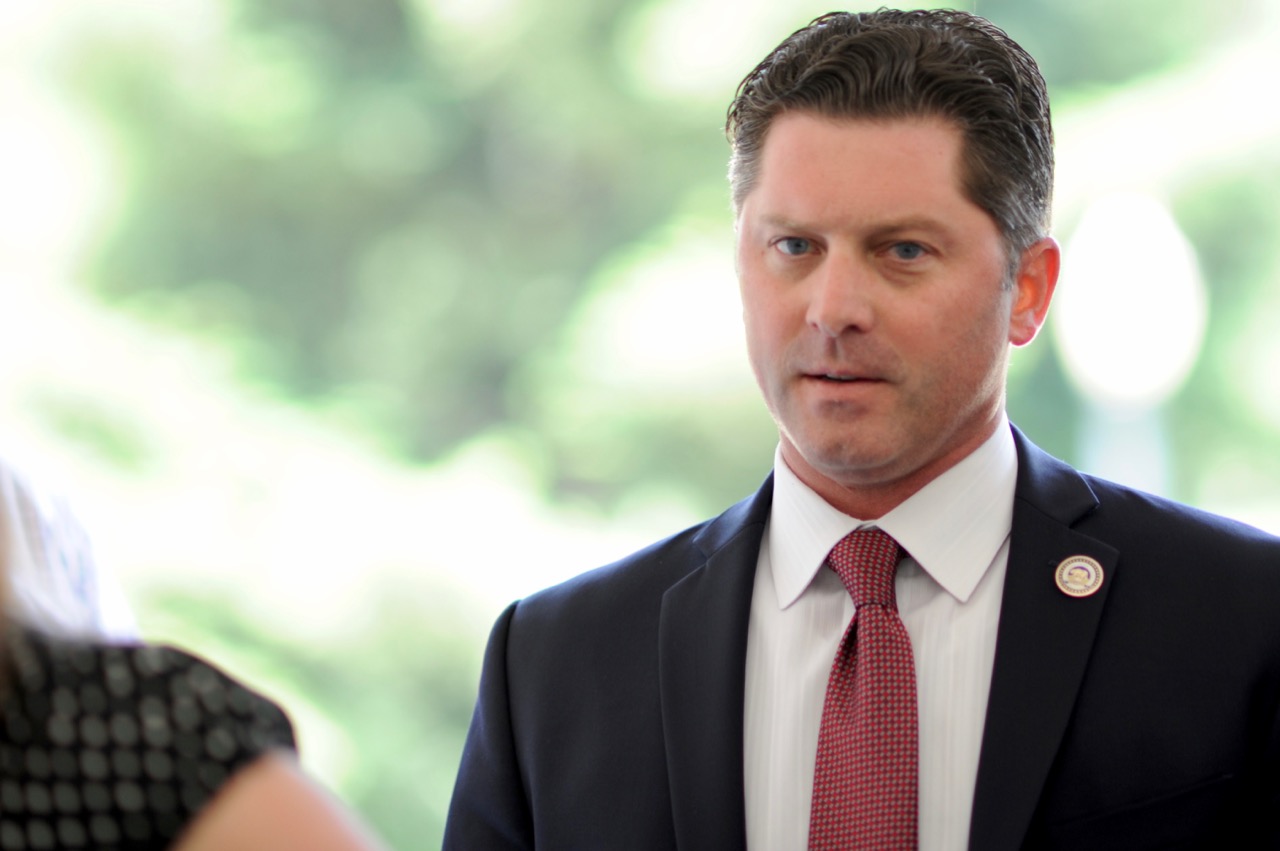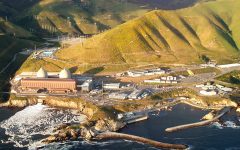
Secretary of Energy Jennifer Granholm (Photo: energy.gov)
Energy Secretary Jennifer Granholm Says California Could Save Diablo Canyon Nuclear Plant
With the Energy Secretary willing to keep the plant open in a push for clean energy, nuclear power opponents are running out of excuses
By Evan Symon, December 1, 2021 4:05 pm

At an energy transition conference on Tuesday, U.S. Energy Secretary Jennifer Granholm said that California should reconsider closing it’s last nuclear plant, Diablo Canyon, becoming the latest figure wanting to extend the life of the San Luis Obispo County power station.
For the last decade, Diablo Canyon has stood alone as the only operating nuclear power plant in California due to environmental and nuclear safety concerns. Throughout the 1990’s, 2000’s and early 2010’s, multiple nuclear plants were closed across California, with the second last, San Onofre Nuclear Generating Station, closing in the early 2010’s.
Diablo Canyon remained a target for opponents until 2016, when Pacific Gas & Electric (PG&E) announced that they would not be renewing licenses on their reactors, setting them up to stop completely by 2025.
However, since that announcement, green energy demand in California has grown exponentially. A backlash against oil and coal plants, along with legislation and executive orders for statewide carbon-free goals by 2045. This has accelerated demand for non-fossil fuel energy, but presents demand issues. Concerns of brownouts and an energy shortage, especially with a growing electric vehicle market demanding more energy and a growing gap of energy production caused by the push to close more fossil fuel plants before clean energy plants, such as solar, wind, or hydrogen power. can match the energy levels needed to replace the closing plants, have caused many to rethink the Diablo Canyon closure.
As Diablo Canyon currently accounts for 9% of all power generated in California, many have argued that its closure would also have many negative effects.
A renewed push to save nuclear energy in California
Since the late 2010’s, the push to save nuclear energy in California has grown more and more, with many of the same environmentalists and lawmakers pushing for their closure a few decades before now pleading to save them because of the zero carbon potential of the plants.
In California, the state legislature has proposed several bills in an attempt to prolong the life of the plant by another ten or twenty years. A Stanford/MIT study released last month helped convince many of the nuclear power plants’ role in a zero carbon California, but also can be done saving the state $21 billion in power systems costs over a 20-year span if it’s life is extended.
And now with even the Biden Administration backing nuclear plants, the Energy Secretary’s willingness to help save Diablo Canyon has boosted support to keep the plant running.
“California has been very bullish on zero-carbon emission energy,” said Secretary Granholm on Tuesday at Energy Transition North America 2021 on Tuesday. “It may be something that they decide to take a look at, given that I think there is a change underfoot about the opinion that people may have about nuclear. This is clean dispatchable base load power. I know the decision has been made already to close it down, perhaps it’s something that they might reconsider. Let’s just get through this consent-based siting process first and certainly I’m willing to have those conversations.”
Storage for nuclear waste issues also came up during her speech on Tuesday, with Granholm wanting more interim sites that could boost local jobs.
“The Energy Department will talk with communities in the next few months about opportunities for interim sites that can create local jobs,” the Secretary said. “If it’s a community that is more favorable toward nuclear power, they might not be averse to taking on the waste problem, so that those communities that have nuclear facilities won’t have to worry about that problem.”
Opponents against the plant continuing on past 2025 have largely stood their ground on the issue, noting security and design worries at the plant, as well as the up front costs needed to upgrade the plant to keep it open for a few more decades. The big worry, of a nuclear accident on the scale of Chernobyl or Fukushima, especially in a state with a propensity for earthquakes, also have firmly rooted critics against the plant continuing on.
“It is enticing, I have to admit that,” Melissa Key, an environmental lawyer who has represented environmental groups against energy companies with nuclear power plants in the past, told the Globe last month. “But every year of operation means the greater chance of something going wrong. And I don’t think that I even need to tell you the dangers of what a major nuclear accident, especially one so close to fault lines, can do. This is the last one in the state, and for the good of California, it needs to stop. Solar, wind, and other energies will be able to pick up the slack by 2025.”
Supporters want plant to remain open past 2025
With federal interest now growing, and studies showing more and more positives to keeping the plant open, supporters say that it is growing more and more likely that the plant could remain open past 2025.
“Now with the Energy Secretary willing to try and keep the plant open and push for this clean energy, people against the plant are running out of excuses,” countered Sal Braith, a nuclear engineer who has worked at multiple nuclear plants in the U.S., to the Globe on Wednesday. “Technology today is so much better than it was only a few years ago, so the chance of something going wrong has gone down significantly.”
“I think as a compromise that the plant should have a later end date for sure, but we keep it open to allow for other clean energy production and storage to catch up. You know, bridging the gap between fossil fuel usage and clean energy usage. Energy storage capabilities will vastly improve in a few decades time, and new more efficient ways of collecting clean energy will come up too. Hey, who knows, a new technology or method of energy production may even be found within that time. But we need to keep these nuclear plants at least for a bit more to allow the technology to catch up while fossil fuel plants are being phased out.
“California needs to play this smartly. This is why MIT, Stanford, and now the Department of Energy want the plant to remain open. It’s their best shot for a clean energy future without having the state fall way behind on production and get brownouts for it’s trouble.”
As of Wednesday, the California Public Utility Commission has yet to receive any proposals from officials to extend the life of the Diablo Canyon Plant.
- Bill to Require Law Enforcement Disclosure if AI Was Used To Help Write Reports - August 7, 2025
- Gov. Newsom Files FOIA Request To ‘Expose True Cost’ Of L.A. Federal Troop Deployment for Anti-ICE Riots - August 6, 2025
- California Redistricting: How Newsom’s Plan Will Demolish Hard Fought GOP Gains - August 6, 2025





My uranium stocks are up…big. Enough said. (This is not investment advice)
Pro nuclear? For leftists this is akin to saying men cannot bear children. 😉
HA HA!
If we’re serious about generating zero emission electricity, on a continuous and uninterruptible basis, YES Diablo Canyon should remain operating.
The world is recognizing that nuclear may be the best way to “net-zero:
China’s planning at least 150 new reactors in the next 15 years, more than the rest of the world has built in the past 35. The effort could cost as much as $440 billion; as early as the middle of this decade, the country will surpass the U.S. as the world’s largest generator of nuclear power.
UK poised for 16 mini nuclear reactors for carbon-free electricity.
The salt from desalination plants could be used to manufacture sodium metal, for cooling modern nuclear reactors. Desalination addresses the water shortage and modern nuclear plants can use the salt residue from desalination to create electrical power – seems like a win-win scenario.
When “environmentalists” refuse to talk about nuclear energy, they prove it’s not about the environment and it’s not about carbon emissions.
It IS about political power!
How ignorant must “nuclear protesters” be? to think nuclear energy facilities haven’t made any improvements since building them in the 1970s and 1980s.